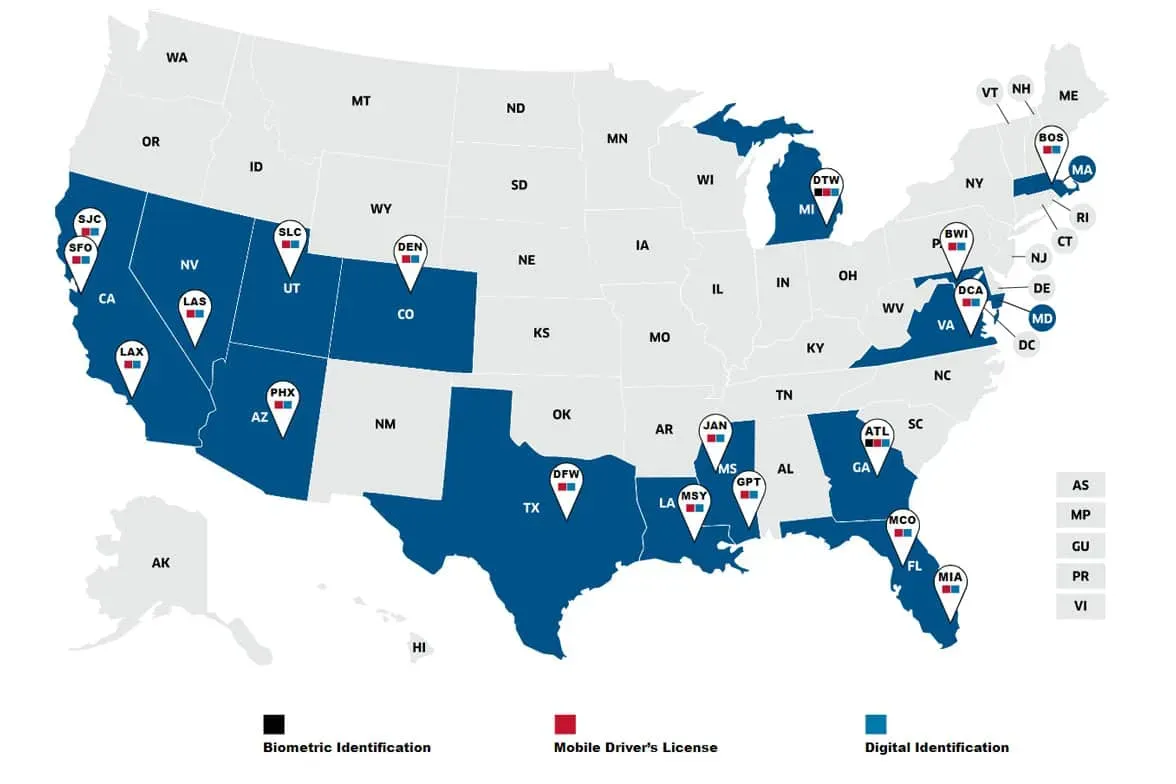In today’s information-driven age, understanding your TSA digital footprint is essential for maintaining your privacy during air travel. As travelers navigate through TSA procedures, concerns about digital privacy can often arise, especially when considering the potential for TSA electronic inspections. While the TSA primarily focuses on physical threats, it’s important to be aware that other entities, like Customs and Border Protection, do have the authority to inspect your devices. With air travel security becoming increasingly stringent, knowing how to protect your digital presence is critical. By staying informed about these regulations, you can ensure a smoother travel experience without compromising your personal information.
When discussing the implications of your TSA digital footprint, it’s important to consider how your online presence can be monitored during air travel. This encompasses everything from the data on your electronic devices to how you share your travel experiences online. While the TSA is responsible for ensuring safety through physical inspections, there are other agencies, such as Customs and Border Protection, that have the capability to delve into the digital realm. Understanding these dynamics not only helps travelers navigate security measures more effectively but also reinforces the importance of safeguarding one’s digital privacy. Ultimately, maintaining awareness of your digital activities while traveling can lead to a more secure and enjoyable journey.
Understanding Your TSA Digital Footprint
In the age of technology, maintaining a minimal TSA digital footprint is essential for travelers who wish to protect their personal information. The Transportation Security Administration (TSA) focuses primarily on ensuring safety during air travel, but your digital presence can have implications for your privacy. While the TSA cannot inspect your devices directly, they can still gather data on your travel patterns and behavior. This means that as you pass through security checkpoints, your interactions with TSA protocols contribute to a digital profile that can be analyzed.
To mitigate risks associated with your TSA digital footprint, it’s advisable to be mindful of the information you share online and through your devices. For instance, consider limiting social media posts about your travels and avoid sharing sensitive details that could be exploited. By being conscious of your digital privacy, you can help ensure that your interactions with travel security entities remain secure and your personal data is protected.
Frequently Asked Questions
What is the TSA’s policy on inspecting digital devices during air travel?
The TSA’s policy on inspecting digital devices states that they cannot inspect the contents of your phone or laptop. Their primary focus is on finding dangerous items such as weapons and explosives, rather than your personal data or digital footprint.
Can the TSA ask to see the contents of my phone or laptop at the airport?
No, the TSA cannot ask to see the contents of your phone or laptop. Their authority is limited to searching for dangerous physical items and they do not inspect digital contents as part of their air travel TSA procedures.
What should I know about my digital privacy with the TSA?
Your digital privacy is generally protected during TSA screenings. While the TSA can open luggage for inspection, they do not have the authority to access your digital devices or personal data unless there is probable cause related to physical contraband.
Are there situations where the TSA could take my phone or laptop?
The TSA may take your phone or laptop only if they have probable cause to suspect that the device is being used for smuggling contraband. Such instances are rare and typically involve visible suspicious items during security screening.
How does Customs and Border Protection (CBP) differ from the TSA regarding device inspections?
Unlike the TSA, Customs and Border Protection (CBP) has the legal authority to inspect the digital contents of your phone or laptop when entering the United States. However, these electronic inspections are rare and require probable cause.
What happens if Customs and Border Protection wants to inspect my device?
If Customs and Border Protection (CBP) wants to inspect your device, they may review messages, photos, and other digital content. This is done to prevent threats and illegal activities from entering the country, but it occurs in less than 0.01% of international travelers.
How can travelers protect their digital footprint when interacting with TSA and CBP?
Travelers can protect their digital footprint by ensuring their devices are secure, using strong passwords, and being aware of their rights regarding inspections. It’s also wise to limit sensitive data on devices while traveling.
What should I do if I have concerns about digital privacy during TSA screenings?
If you have concerns about your digital privacy during TSA screenings, you can choose to travel with minimal sensitive data on your devices and stay informed about your rights regarding inspections.
| Key Point | Details |
|---|---|
| TSA Digital Footprint | The TSA does not inspect the contents of your personal electronic devices. |
| TSA’s Mission | The TSA focuses on searching for dangerous items like weapons and explosives. |
| Device Inspections | The TSA will not unlock phones or laptops unless there is probable cause of contraband. |
| Customs and Border Protection | CBP has the authority to inspect digital content upon entry to the U.S. |
| Frequency of Inspections | Electronic inspections by CBP are rare, occurring in less than 0.01% of cases. |
Summary
The TSA digital footprint is an essential topic for anyone who travels frequently. While the TSA is responsible for ensuring security at airports, it does not have the authority to inspect personal electronic devices unless there is probable cause. This means that your digital data remains private during TSA screenings. However, travelers should be aware that Customs and Border Protection can perform electronic inspections when entering the U.S., although these are quite rare. Understanding the limitations of TSA’s authority can help alleviate concerns about privacy and security while traveling.










